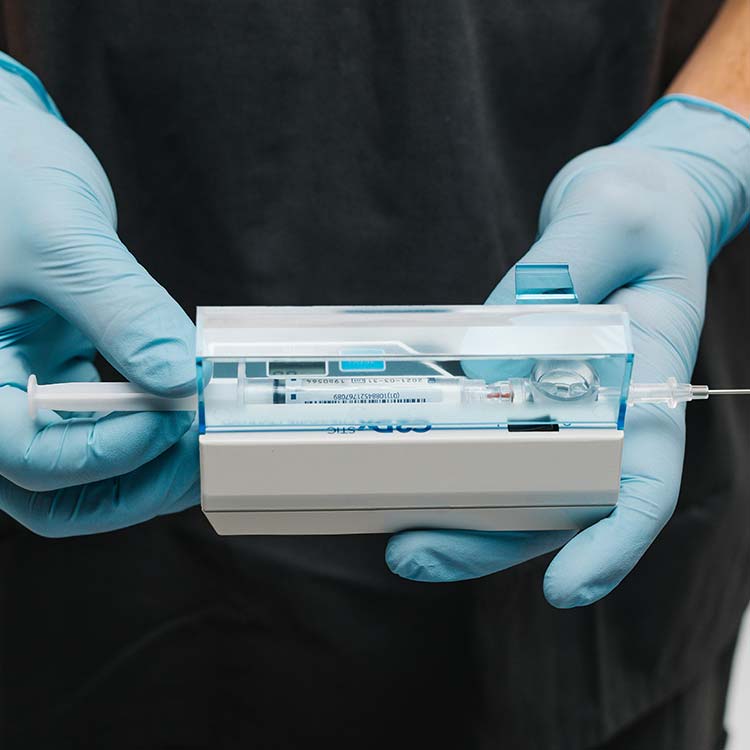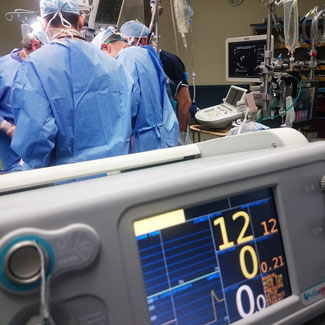Monitoring of the intra-compartmental pressure should be routine in any unconscious, sedated and uncooperative patient. If the delta pressure remains less than 30 mmHg, in the presence of clinical signs and despite conservative measures, fasciotomy should be performed as an emergency to preserve the function of the limb. Abstract Whitesides […]
Read More
United States trauma surgeons reported that the clinical assessment using the intra-compartmental pressure monitor, should be utilized in the awake patient and continuous monitoring using the slit catheter is recommended in the obtunded or unconscious patient. Abstract The incidence of acute compartment syndrome is documented to be 3.1 per 100,000 […]
Read More
The Estimated Sensitivity and Specificity of Compartment Pressure Monitoring for Acute Compartment Syndrome Authors: MM McQueen, AD Duckworth, SA Aitken, and CM Court-Brown Read the Full Article >>
Read More
Pain is one of the earliest findings in patients who have acute compartment syndrome, but findings on history and exam cannot rule out the diagnosis. The measurement of intra-compartmental pressures using a [STIC Intra-Compartmental] pressure monitor is the most reliable test. Abstract Acute compartment syndrome, otherwise known as a surgical emergency, is most common […]
Read More
Persistent and recurrent symptoms of leg pain, cramping, and tightness in any athlete should raise awareness of underlying chronic exertional compartment syndrome (CECS) and warrant early intra-compartmental pressure measurements using a STIC pressure monitor for an effective diagnosis. Abstract Chronic exertional compartment syndrome in athletes commonly represents a diagnostic and […]
Read More
The ability for a clinician to promptly diagnose and initiate proper treatment for acute exertional compartment syndrome (AECS) is crucial for the prevention of severe or devastating consequences for the patient. Abstract Acute exertional compartment syndrome (AECS) is characterized by a rise in pressure within a closed fascial space in […]
Read More
Compartment syndrome is a dangerous and potentially disastrous condition for a patient, which if not treated in a timely fashion can have devastating consequences. If there is high clinical suspicion of compartment syndrome intra-compartmental pressure should be measured immediately using a STIC intra-compartmental pressure monitor to confirm the proper diagnosis […]
Read More
Many authors advocate the use of intra-compartmental pressure monitoring in all at risk patients and those where extra clinical vigilance is advised. It has also been suggested that pressure monitoring may detect acute compartment syndrome prior to the onset of clinical signs, in addition to reducing the time to fasciotomy […]
Read More
Delayed diagnosis and treatment can lead to permanent dysfunction in the limb involved. For early diagnosis, ICP monitoring is one of the most important objective findings. In this case, the medical staff did not recognize the risk of ALCS and ICP was not monitored; therefore, the diagnosis of ALCS was […]
Read More
In a retrospective study of 1,184 patients investigating the use of continuous intra-compartmental pressure monitoring for the diagnosis of acute compartment syndrome reported an estimated sensitivity of 94%, specificity of 98%, and a negative predictive value of 99%, using the intraoperative clinical findings as the gold standard. Abstract Acute compartment […]
Read More









